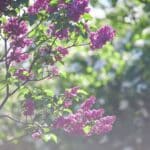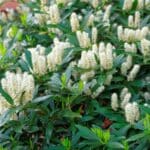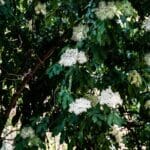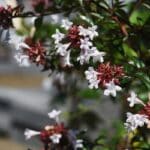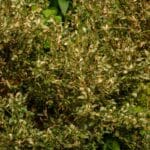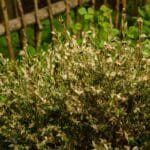Are you wondering how to grow and care for the smooth hydrangea? Look no further than this helpful guide.
Most gardeners in the United States have come across the famous hydrangea plant at least once in their lifetime. It’s a commonly loved plant among horticulturists everywhere.
But what’s even more admirable about this plant besides its popularity is the different hydrangea varieties available.
If you choose to add a hydrangea bush to your garden, you definitely need to know which type. There are specific needs and routines respective to every kind of hydrangea out there. It’s a beautiful yet complex plant that requires a well-informed mind to grow.
In your shopping, you may come across a hydrangea called “Smooth Hydrangea,” or Hydrangea arborescens (H. arborescens, for short). This hydrangea is native to the Eastern United States, so you might’ve seen it yourself once or twice.
Interested in growing smooth hydrangea but don’t know where to start? No need to worry. We have all the information you’ll ever need about growing and caring for these plants. Keep reading to learn more.
What is Smooth Hydrangea?
Smooth hydrangea, also known as “Wild hydrangea” and “sevenbark”, are deciduous shrubs native to the Eastern United States. They naturally grow on streambanks, bluff bases, rocky wooden slopes, or ravines in USDA Zones 3-9. Unlike other hydrangeas, these unique shrubs do not change flower color with soil pH levels.
H. arborescens can grow anywhere from 3’ to 6’ tall and grow just as wide. Their dark green leaves are ovate and have cordate bases with toothed margins. You’ll see these plants growing freely in June until the end of September when fall begins.
Like most hydrangeas, these feature bulb-shaped floral clusters. The flowers of wild hydrangeas begin green before transitioning into a bright white and then drying into a light brown hue. Creamy white flowers heads can grow 4-6” in diameter with the proper care and attention.
The name arborescens comes from the Latin root word “arbor,” meaning tree. This name is intended to describe the tree-like appearance of the plant. It’s a common plant among home landscapes that can satisfy the hydrangea’s needs.
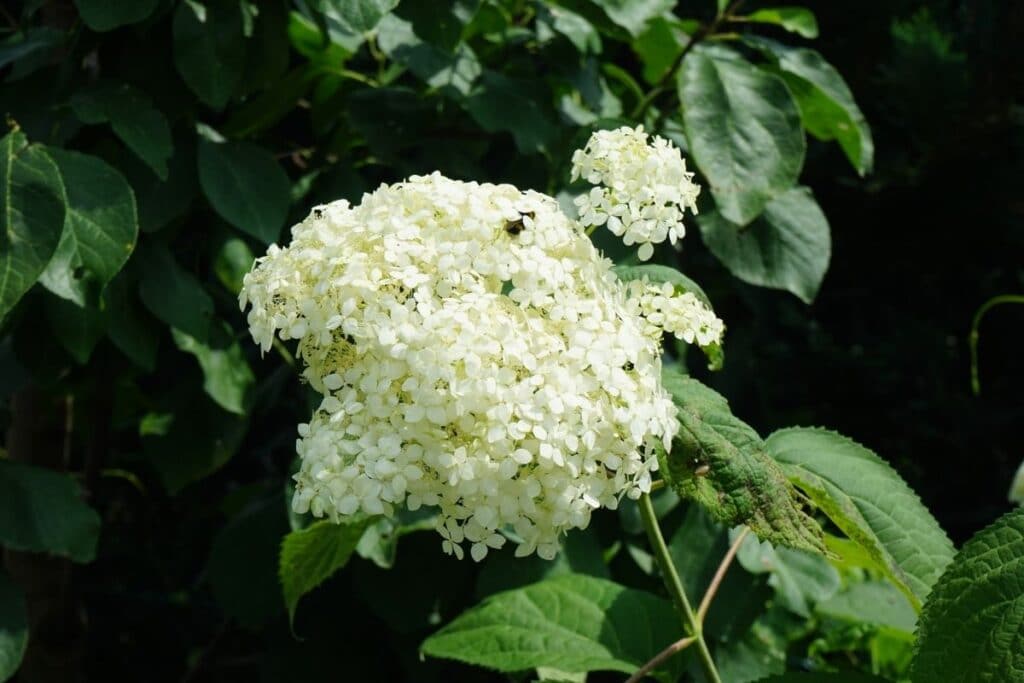
How to grow Smooth Hydrangea Plants
These container plants are easy to grow so long as they get adequate moisture. Foliage tends to struggle in dry conditions but will survive with frequent watering.
Before any “hard” pruning, let your flowering shrubs grow for a season or two.
Pruning varies with different hydrangeas, but a good rule of thumb is to prune after a bloom. If showy blooms only grow on old wood, then prune them not long after flowers have grown. If flowers only grow on new wood, then prune in the late winter.
Always trim your plants down to the ground to encourage strong stem growth and fuller flower growth. Practice “deadheading” if flowers dry before late spring (It’s O.K. to do this during the plant’s first season or two).
Furthermore, cut away all damaged or weakened stems in early spring. Always follow the same routine of cutting away at the plant’s base.
Try to use neutral or slightly acidic soil for the best results.
How to Plant Smooth Hydrangea
These plants should be planted in partial shade. These plants do best in average to medium moisture and well-drained soil.
For planting hydrangeas from a container, loosen the plant’s roots before inserting them into the soil. Set the hydrangea at the same depth it was in the container. The top of the root ball should be level with the surrounding soil.
Be sure to surround the planting area with organic material. Apply 2” to 3” of mulch over the hydrangea’s roots but off the crown, and water it in well.
Smooth Hydrangea Care Guide
Although maintenance for smooth hydrangeas is low, they quickly die out when neglected. Follow these tips on how to take care of hydrangeas to ensure your shrubs last.
Sunlight
Smooth hydrangeas thrive in partial shade to full sun. While they can tolerate some shade, they produce more robust blooms when exposed to at least 4-6 hours of direct sunlight daily.
In hotter climates, providing afternoon shade can help prevent stress.
Adequate sunlight is crucial for the development of their distinctive, large, and rounded flower heads, making them a charming addition to gardens.
Watering
The first thing anyone should know about watering smooth hydrangea is that they’re drought intolerant. When hydrangea arborescens blooms dry up, their leaves will droop, signaling you to water them. Yellowing leaves early in the season is also a sign that your hydrangeas need watering.
Always maintain average soil moisture and never let it dry out. Consistent watering is good, but overdoing it can lead to root rot, which will stunt your hydrangea’s growth.
Weeding
Hydrangeas are large shrubs that don’t require much weeding. Practice usual weeding care.
Fertilizer Smooth Hydrangeas
Never fertilize newly planted hydrangeas. It’s better to allow the roots to seek out nutrients on their own. Also, these shrubs won’t require fertilizer in the first year if the planting area was well amended with mulch.
During the second year, apply cow manure around the plan but keep it away from the stem. Follow the same routine for the following years in early spring and again after flowering or late winter.
Common Hydrangea Pests and Diseases
Smooth hydrangea bushes struggle with pests like aphids, scale, nematodes, and mites. Pruning smooth hydrangeas to the ground every year will help limit the abundance of these pests.
These hydrangea species are susceptible to bud blight, leaf spots, powdery mildew, rust, mold, and bacterial wilt. To avoid fungal infections like these, space out your hydrangeas for proper air circulation.
Other Tips for Growing Smooth Hydrangea
Some other tips for growing these plants include cutting ¼” above buds. Practice this when deadheading or doing some light-pruning.
You should also be cautious when pruning hydrangeas if you haven’t mastered the correct style. Each type of hydrangea calls for different pruning techniques, making it easy to accidentally stunt plant growth. Do some research on your hydrangea before pruning it down.
Types of Hydrangea Arborescens
While it’s important to know which types of hydrangeas you’re growing, it’s equally important to understand the cultivar as well. Smooth hydrangea bush is a trendy plant that inspires numerous attempts at improving its flower and growth pattern. To help, we’ve listed the various Hydrangea arborescens cultivars popular among horticulturists today.
‘Annabelle’
Compared to straight smooth hydrangea, the ‘Annabelle’ cultivar features large floral clusters that reach up to 12” in diameter. During its bloom, ‘Annabelle’ flowers can become so heavy that they droop towards the ground, giving it a “weeping” appearance. Of all cultivars, ‘Annabelle’ is the most popular.
This cultivar has been awarded two prizes from renowned horticulture societies. One from the Royal Horticultural Society’s Award of Golden Merit, and another from The Pennsylvania Horticultural Society’s Gold Medal Award.
While slightly smaller (3-5” by 4-6”) than straight smooth hydrangea, the ‘Annabelle cultivar’ is well resistant to insects and disease. This makes it easier to choose Annabelle hydrangea companions. Their bloom lasts around two months in total.
‘Haas Halo’
Similar to the ‘Annabelle’ cultivar, the ‘Haas Halo’ features large floral blooms in the summer months. What distinguishes the ‘Haas Halo’ from ‘Annabelle’, however, is the lace-cap bloom pattern. This is easily identified by fertile flower buds in the middle of the cluster, with showy flowers on the margins.
These dome-shaped lace-cap flowers grow to a massive diameter of 1’. Its leaves are the same as other flowering shrubs but feature a deeper blue-green shade, adding an extra layer of beauty. ‘Haas Halo’ can tolerate droughts, heatwaves, or extreme cold.
‘Hayes Starburst’
The ‘Hayes Starburst’ cultivar features a compact, dome-shaped bloom, 6-8” wide. The plant grows from 2-4’ tall – also about as wide – and is generally smaller than other cultivars. The flower heads feature double star-like florets that cluster closer together than different types of H. arborescens.
Like other cultivars, the flowers grow green, mature to a bright white, and dry into a light brown. It blooms only on new wood, so flower growth is guaranteed.
‘Incrediball®’
Much like ‘Annabelle’, H. arborescens ‘Incrediball’ grows large, white, and rounded flower heads that grow 12” in diameter. Incrediball hydrangeas grow flower clusters on sturdy stems that do not flop with weight, compared to Annabelle’s “weeping” effect.
‘Incrediball’ hydrangeas will attract butterflies, pollinators, and other wildlife with their large snowball-like flowers. These plants grow 5’ in height and 6’ in width.
‘Invincibelle® Ruby’
As another adaptation of the Annabelle cultivar, ‘Invincibelle Ruby’ improves upon the hydrangea’s flower head bloom that gardeners admire. ‘Invincibelle Ruby’ blooms a large, mophead, upright floret cluster that begins as a deep burgundy red. Over time, its florets’ colors transition into two-toned ruby red and silvery pink.
‘Invincibelle Ruby’ plants rebloom all season. This cultivar is also notable for its deep, dark foliage that contrasts nicely with its deep pink flowers.
FAQs
How do you prune smooth hydrangeas?
Smooth hydrangeas (Hydrangea arborescens) are typically pruned in late winter or early spring before new growth emerges. Cut back the stems to a height of 6-12 inches above the ground, removing any dead or weak growth. This rejuvenation pruning helps promote vigorous growth and abundant flowering.
What is the best fertilizer for smooth hydrangeas?
A balanced, slow-release fertilizer with a formulation such as 10-10-10 or 20-20-20 is suitable for smooth hydrangeas. Apply the fertilizer in early spring before new growth begins, following the manufacturer’s instructions for application rates.
Can smooth hydrangeas be pink?
Smooth hydrangeas typically bloom in shades of white or cream, but certain cultivars may produce pink flowers under specific conditions. For example, ‘Annabelle’ hydrangeas may exhibit a pale pink hue in alkaline soils. However, altering the soil pH to encourage pink blooms may not be as effective for smooth hydrangeas as it is for mophead or lacecap hydrangeas.
Why is my smooth hydrangea turning brown?
Smooth hydrangeas may turn brown due to various factors such as drought stress, insufficient watering, extreme temperatures, fungal diseases, or environmental factors. Ensure the plant is adequately watered, especially during periods of hot, dry weather, and monitor for signs of pests or diseases. Proper siting, soil moisture management, and regular maintenance can help prevent browning of smooth hydrangea foliage.
Conclusion
You’re ready to grow your own now! Horticulturists across North America love these plants, so adding them to your own garden is sure to make an impression.
Some great places to add these include rain gardens or house borders. They also possess some utility when used as protection against erosion on hillside landscapes with slanting soil banks.
Use the blossoms in fresh or dried arrangements as well. Smooth hydrangeas make beautiful centerpieces! If you buy the seeds, learn how to grow hydrangeas from seed on our blog.
References
*image by cristaldream/depositphotos

